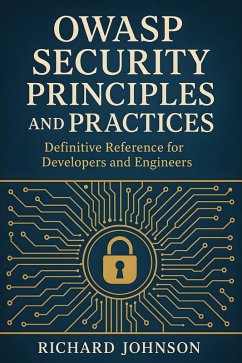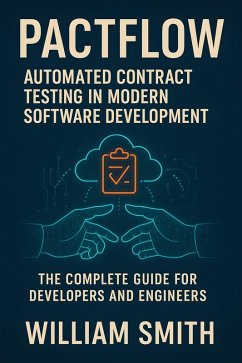
Practical Guide to Detect Secrets in Secure Development (eBook, ePUB)
The Complete Guide for Developers and Engineers

PAYBACK Punkte
0 °P sammeln!
"Practical Guide to Detect Secrets in Secure Development" In an era where digital infrastructures form the backbone of every organization, "Practical Guide to Detect Secrets in Secure Development" offers an authoritative road map to one of the most critical challenges in application security: the detection and management of secrets. The book opens by defining and categorizing the wide array of digital secrets-keys, passwords, tokens, and certificates-explaining their evolving role within cloud-native environments, microservices, and DevSecOps pipelines. It provides clear-eyed insights into the...
"Practical Guide to Detect Secrets in Secure Development" In an era where digital infrastructures form the backbone of every organization, "Practical Guide to Detect Secrets in Secure Development" offers an authoritative road map to one of the most critical challenges in application security: the detection and management of secrets. The book opens by defining and categorizing the wide array of digital secrets-keys, passwords, tokens, and certificates-explaining their evolving role within cloud-native environments, microservices, and DevSecOps pipelines. It provides clear-eyed insights into the risks of exposed secrets, real-world breaches, the impact of regulatory mandates, and the indispensable role secret detection plays throughout the secure development lifecycle. Focusing on both the technical and human aspects, the guide delves deeply into static and dynamic detection methods, unraveling the complexities of source code analysis, artifact inspection, log monitoring, and runtime threat hunting. Readers are systematically introduced to advanced methodologies such as entropy analysis, machine learning-based discovery, evasion technique detection, and the integration of secret management systems at scale. Notably, the book offers hands-on strategies for embedding secret detection into CI/CD pipelines, version control systems, and polyrepo or monorepo environments-making it relevant for teams of every size and sophistication. Beyond algorithms and automation, the guide explores the vital role of organizational culture and process, equipping security leaders and developers alike with playbooks for incident response, secret rotation, policy enforcement, and developer education. Special emphasis is placed on the nuances of human error, change management, and effective stakeholder communication. With dedicated chapters on the demands of modern cloud-native ecosystems, emerging standards, and future directions-including zero trust, open source collaboration, and post-quantum considerations-this book positions itself as an indispensable reference for anyone aspiring to build, operate, or secure systems against the ever-present threats posed by exposed secrets.
Dieser Download kann aus rechtlichen Gründen nur mit Rechnungsadresse in A, B, BG, CY, CZ, D, DK, EW, E, FIN, F, GR, H, IRL, I, LT, L, LR, M, NL, PL, P, R, S, SLO, SK ausgeliefert werden.













